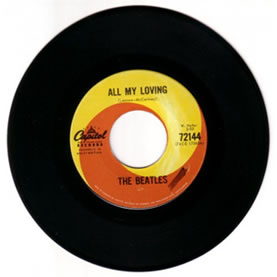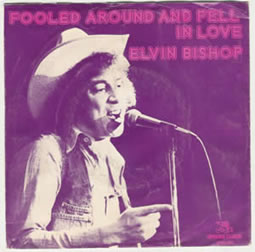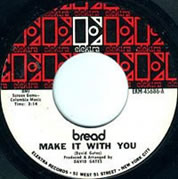“Pledging My Love” By Johnny Ace
 Though this song was recorded by a variety of artists, the most popular version of this song was recorded by the singer Johnny Ace. This version of the song was produced by Johnny Otis, who also played the vibraphone on the recording. Johnny Otis’ band was also featured on the track. Ace’s version was released by Duke Records on December 1954. The release came soon after Ace’s death by an accidental self-inflicted gunshot wound. Ace’s version reached #17 on the Billboard chart. It also spent ten weeks at #1 on the R&B chart.. It would be re-released in 1958 with additional background vocals.
Though this song was recorded by a variety of artists, the most popular version of this song was recorded by the singer Johnny Ace. This version of the song was produced by Johnny Otis, who also played the vibraphone on the recording. Johnny Otis’ band was also featured on the track. Ace’s version was released by Duke Records on December 1954. The release came soon after Ace’s death by an accidental self-inflicted gunshot wound. Ace’s version reached #17 on the Billboard chart. It also spent ten weeks at #1 on the R&B chart.. It would be re-released in 1958 with additional background vocals.
“This Guy’s in Love with You” By Herb Alpert
 This song was written by Burt Bacharach and Hal David, leader of the Tijuana Brass. It was recorded by Herb Alpert, who had previously only been known for his trumpet playing.
This song was written by Burt Bacharach and Hal David, leader of the Tijuana Brass. It was recorded by Herb Alpert, who had previously only been known for his trumpet playing.
The recording originated when Alpert asked Bacharach, “Say, Burt, do you happen to have any old compositions lying around that you and Hal never recorded; maybe one I might use?” Alpert said he made it his practice to ask songwriters that particular question; often a lost “pearl” was revealed.
As it happened, Bacharach recalled one, found the lyrics and score sheet, and offered it to Alpert. Alpert saw the possibilities in it for himself. The composition had a recognizable Bacharach-David feel, a spot for a signature horn solo in the bridge and in the fadeout, and it was an easy song to sing within Alpert’s vocal range. He originally sang “This Guy’s in Love with You” on a 1968 television special, The Beat of the Brass. In response to numerous viewer telephone calls following the broadcast, Alpert decided that the song should be released as a single recording, and it reached No. 1 on the U.S. Billboard Hot 100 pop singles chart in June of that same year, remaining in the top position for four weeks.
It was not only Alpert’s first No. 1 single, but it was also the first No. 1 single for his A&M record label. The song also spent ten weeks at No. 1 on the Easy Listening chart. For the single’s B-side, Alpert chose “A Quiet Tear,” an album track from his first album in 1962, The Lonely Bull
“This Guy’s in Love with You” was succeeded at No. 1 on the Billboard Hot 100 by ”
“Surfer Girl” by the Beach Boys
 This song was written, produced and sung by Brian Wilson for his band The Beach Boys. It was released as a single and it then appeared on the 1963 album of the same name, Surfer Girl. The B-side of the single was “Little Deuce Coupe”. The single was the first Beach Boys record to have Brian Wilson officially credited as the producer. The band first recorded the song at World Pacific Studios on February 8, 1962 which was one of the band’s first ever recording sessions. However, the recordings from that session, engineered by Hite Morgan, would ultimately remain unreleased until later archival releases.
This song was written, produced and sung by Brian Wilson for his band The Beach Boys. It was released as a single and it then appeared on the 1963 album of the same name, Surfer Girl. The B-side of the single was “Little Deuce Coupe”. The single was the first Beach Boys record to have Brian Wilson officially credited as the producer. The band first recorded the song at World Pacific Studios on February 8, 1962 which was one of the band’s first ever recording sessions. However, the recordings from that session, engineered by Hite Morgan, would ultimately remain unreleased until later archival releases.
The instrumental track as well as the vocals for the officially released version were recorded on June 12, 1963 at Western Recorders, a popular recording studio. The musicians on the track are David Marks and Carl Wilson on guitar, Brian Wilson on bass guitar and Dennis Wilson on drums. The “Surfer Girl” single backed with “Little Deuce Coupe” was released under Capitol Records in the United States on July 22, 1963. The single entered the Billboard chart on August 3. It would eventually reach the Top 40 on August 17 at the number 28 position. After the single had been on the charts for six weeks it peaked at number 7 on September 14, 1963. Though it would be re-released at later dates, it would never achieve a place on the billboard charts.
“All My Loving” By The Beatles
 This song was written by Paul McCartney and was found on the 1963 album With the Beatles. Though it was not released as a single in the United Kingdom or the United States, it drew considerable radio airplay, prompting EMI to issue it as the title track of an EP.
This song was written by Paul McCartney and was found on the 1963 album With the Beatles. Though it was not released as a single in the United Kingdom or the United States, it drew considerable radio airplay, prompting EMI to issue it as the title track of an EP.
The song was released as a single in Canada, where it became a number one hit. The Canadian single was imported into the US in enough quantities to peak at number 45 on the Billboard Hot 100 in April 1964. This would be the first exposure many Americans would have to the group, as they would perform it on February 9, 1964 on the Ed Sullivan Show.
“All You Need is Love” By The Beatles
This song was written by John Lennon and was released as a single, not featured on an album. It was released in July of 1967.
 The Beatles performed the song as Britain’s contribution to Our World, the first live global television link, on June 25, 1967.
The Beatles performed the song as Britain’s contribution to Our World, the first live global television link, on June 25, 1967.
To Love Somebody” By Bee Gees
 This song was written by Barry and Robin Gibb and produced by Robert Stigwood. To Love Somebody was the second single released by the Bee Gees from their international debut album, Bee Gees 1st, in 1967.
This song was written by Barry and Robin Gibb and produced by Robert Stigwood. To Love Somebody was the second single released by the Bee Gees from their international debut album, Bee Gees 1st, in 1967.
The single reached No.17 in the United States and No.41 in the United Kingdom. The song’s B-side was “Close Another Door”.The single was reissued in 1980 on RSO Records with “How Can You Mend a Broken Heart” as its flip side. The song ranked at number 94 on NME magazine’s “100 Best Tracks of the Sixties”. It was a minor hit in the UK and France. It reached the top 20 in the US. It reached the top 10 in Canada.
The song has been recorded by many other musicians, including Janis Joplin, Nina Simone whose version reached No. 5 in the UK in 1969, Michael Bolton whose recording reached No.11 in the US and No.16 in the UK in 1992.
How Deep is Your Love” By the Bee Gees
 This ballad was written and recorded by the Bee Gees in 1977 and released as a single in September. It was originally intended for Yvonne Elliman, but she later recorded “If I Can’t Have You” instead. It was ultimately used as part of the soundtrack to the film Saturday Night Fever.
This ballad was written and recorded by the Bee Gees in 1977 and released as a single in September. It was originally intended for Yvonne Elliman, but she later recorded “If I Can’t Have You” instead. It was ultimately used as part of the soundtrack to the film Saturday Night Fever.
It was a number three hit in the United Kingdom and Australia. In the United States, it topped the Billboard Hot 100 on 24 December 1977 (becoming the first of six consecutive US number-one hits), ended the 10-week reign of Debby Boone with “You Light Up My Life”. It stayed in the Top 10 for a then-record 17 weeks. The single spent six weeks atop the US adult contemporary chart. It is listed at number 22 on the
The single spent six weeks atop the US adult contemporary chart. It is listed at number 22 on the 55th-anniversary edition of Billboard’s All Time Top 100. Alongside “Stayin’ Alive” and “Night Fever”. “How Deep Is Your Love” ranked number 375 on Rolling Stone’s list of the 500 Greatest Songs of All Time. During the Bee Gees’ 2001 Billboard magazine interview, Barry reportedly said that “How Deep Is Your Love” was his favorite Bee Gees song.
Besides being used in Saturday Night Fever, the song has also been featured in other films such as Donnie Brasco, Sex and the City and A Dog’s Purpose. It’s also used in television shows such as Nip/Tuck, The Simpsons, and Parenthood.
“Fooled Around and Fell in Love” By Elvin Bishop
 This single was both written and performed by blues guitarist Elvin Bishop. It appeared on his 1975 album Struttin’ My Stuff and was released as a single the following year.
This single was both written and performed by blues guitarist Elvin Bishop. It appeared on his 1975 album Struttin’ My Stuff and was released as a single the following year.
Bishop invtied Mickey Thomas to sing lead on the song. The song peaked at #3 on the Billboard Hot 100 singles chart in May 1976.The record was certified gold by the Recording Industry Association of America on June 23, 1976.
Based on his work with Bishop, Thomas was invited to become the lead singer for Jefferson Starship.
“Make It With You” By Bread
 This song was written by David Gates and originally recorded by the pop-rock group Bread, of which Gates was a member. Only Gates and drummer Mike Botts appear on the song and the song was a #1 hit. The song first appeared on Bread’s 1970 album, On the Waters.
This song was written by David Gates and originally recorded by the pop-rock group Bread, of which Gates was a member. Only Gates and drummer Mike Botts appear on the song and the song was a #1 hit. The song first appeared on Bread’s 1970 album, On the Waters.
Released as a single that June, it was the group’s first top-ten hit on the Billboard Hot 100 singles chart and spent the week of August 22, 1970, at number one, their only single to do so; it also reached #5 on the UK Singles Chart. Billboard ranked “Make It with You” as the No. 13 song of 1970, and it was certified gold by the RIAA for sales of over one million copies.
“Worst That Could Happen” By Brooklyn Bridge
 This song was written by singer-songwriter Jimmy Webb. Originally recorded by The 5th Dimension on their 1967 album of nearly all-Jimmy Webb songs, The Magic Garden, “The Worst That Could Happen” was later recorded by Johnny Maestro & the Brooklyn Bridge and reached the Billboard Hot 100’s top 40 (at #38) on 4 January 1969, peaking at #3 on 1-8 February 1969.
This song was written by singer-songwriter Jimmy Webb. Originally recorded by The 5th Dimension on their 1967 album of nearly all-Jimmy Webb songs, The Magic Garden, “The Worst That Could Happen” was later recorded by Johnny Maestro & the Brooklyn Bridge and reached the Billboard Hot 100’s top 40 (at #38) on 4 January 1969, peaking at #3 on 1-8 February 1969.
The song depicts a man reflecting on an affair he’d had with a woman with whom he is still in love, but who is about to marry someone else. It has been stated that, along with “MacArthur Park” and “By The Time I Get to Phoenix”, “The Worst That Could Happen” is about a relationship that Webb had had with a woman named Susan.
